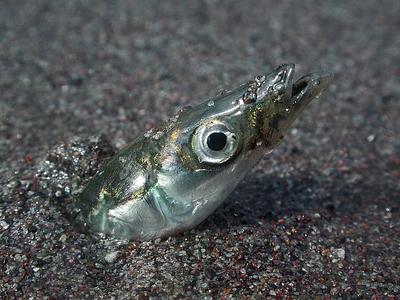_Emma_Marriott.jpg)
Sandeels
What do they look like?
Sandeels are long and slender like an eel.
Lesser Sandeels (Ammodytes tobianus) and Raitt’s Sandeels (A. marinus) have a pointed jaw, and the lower jaw is longer than the upper. They are silver in colour with a yellowish, grey-green back and a small, forked tail fin.
Greater Sandeels (Hyperoplus lanceolatus) are larger (up to double the size) and are silver in colour with a darker blue-green back.
Where can I see them in Scotland?
From April to September, they will be found shoaling in shallow coastal waters around the whole of the UK. Lesser and Raitt's Sandeels prefer inshore waters around estuaries, sheltered beaches and harbours and are unlikely to be seen in water deeper than 20 meters.
Greater Sandeels also like sandy, clean seafloors but can be found much deeper, down to 150 metres.

